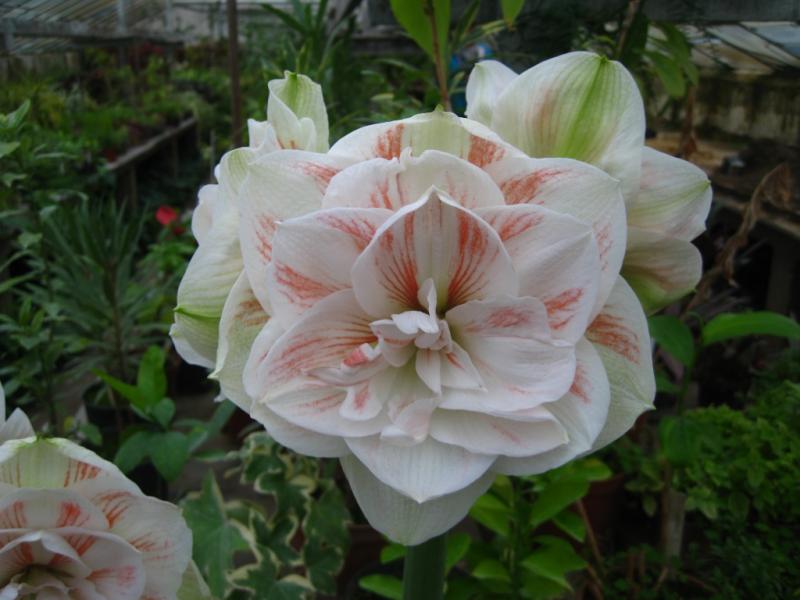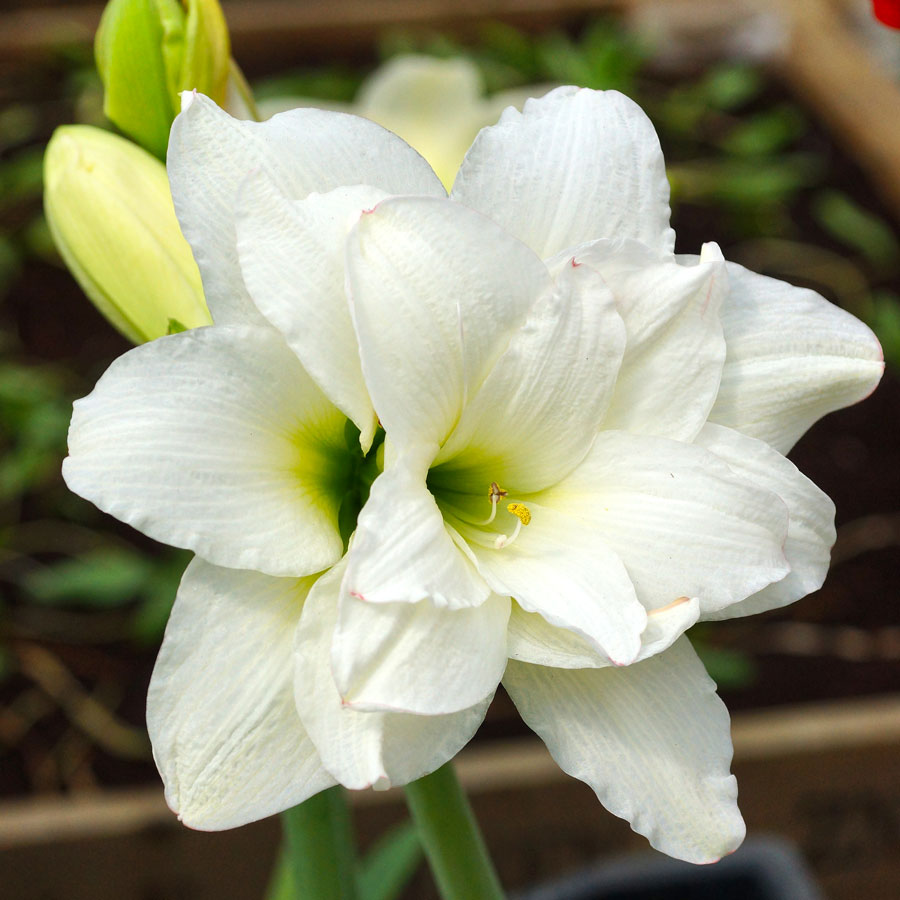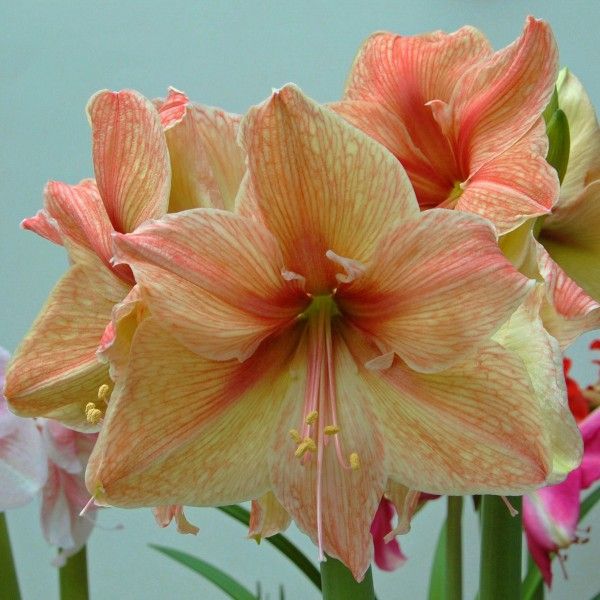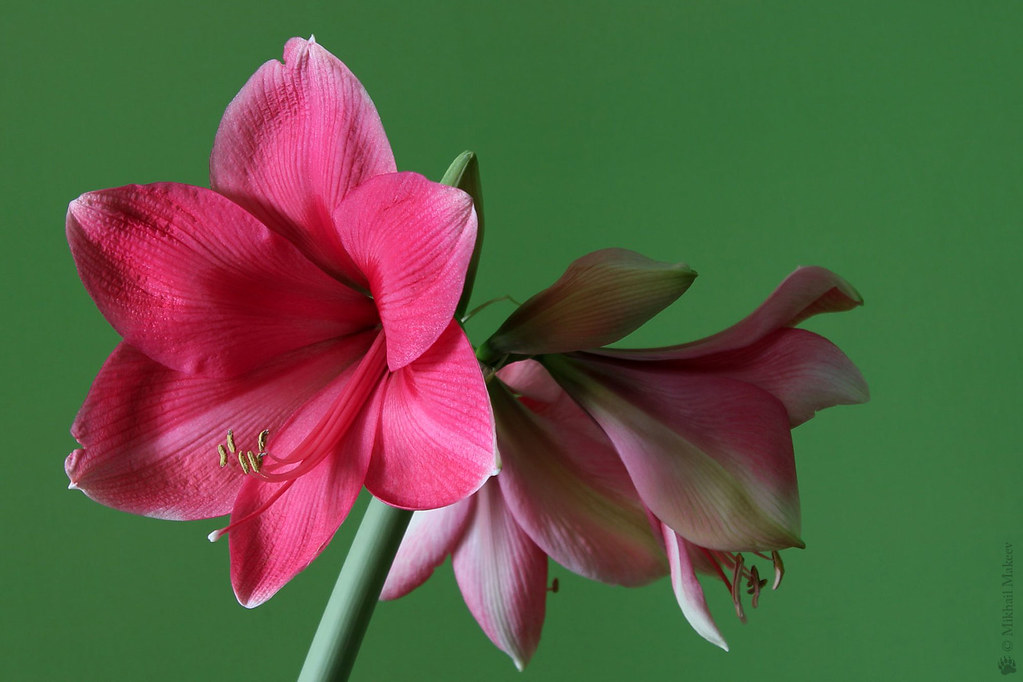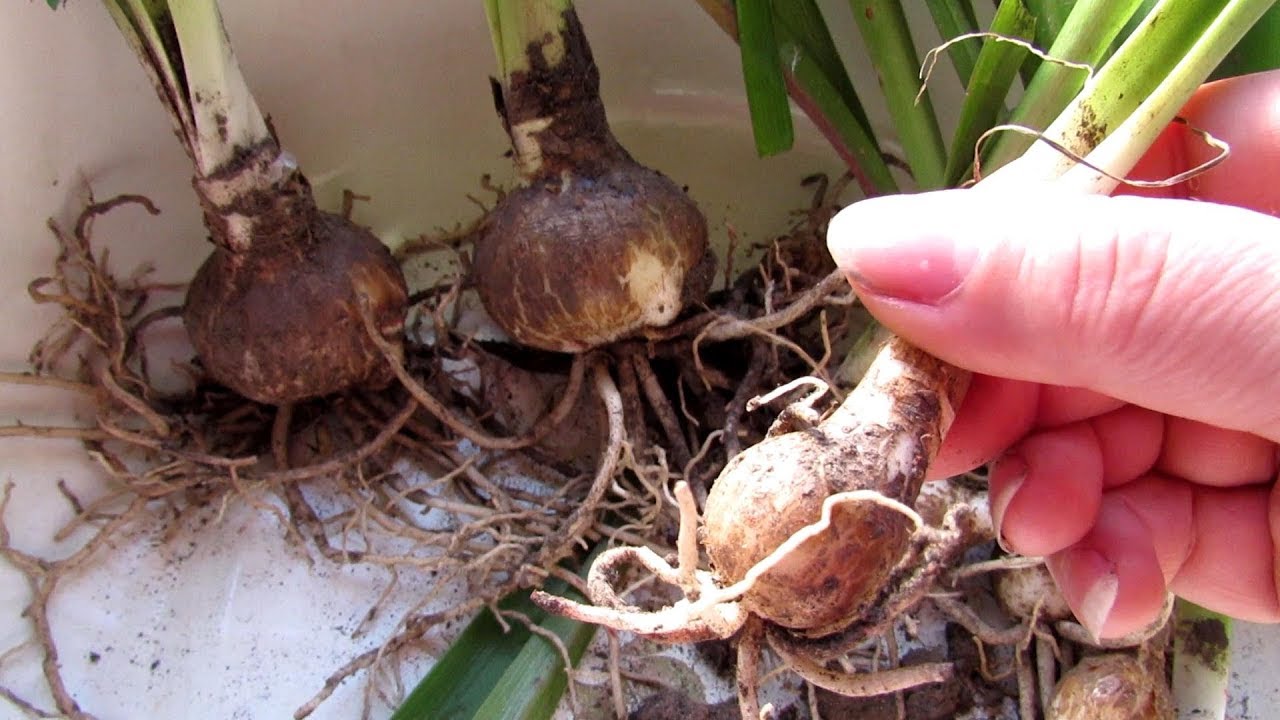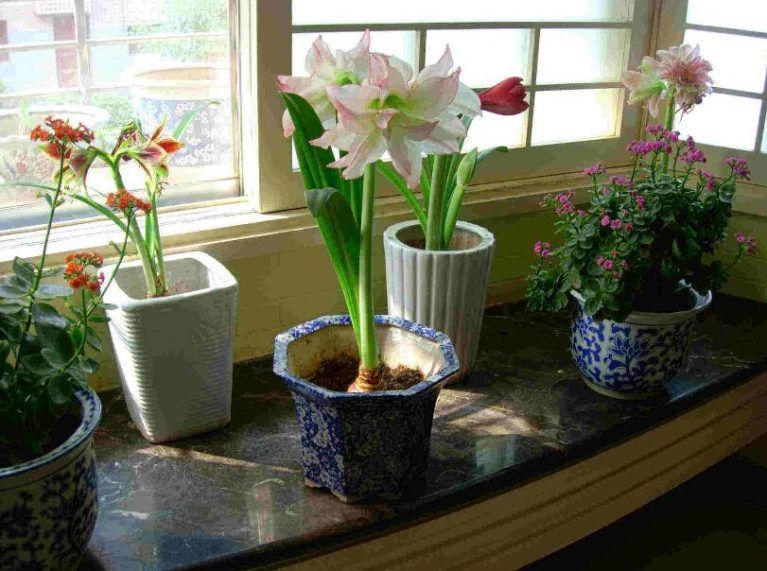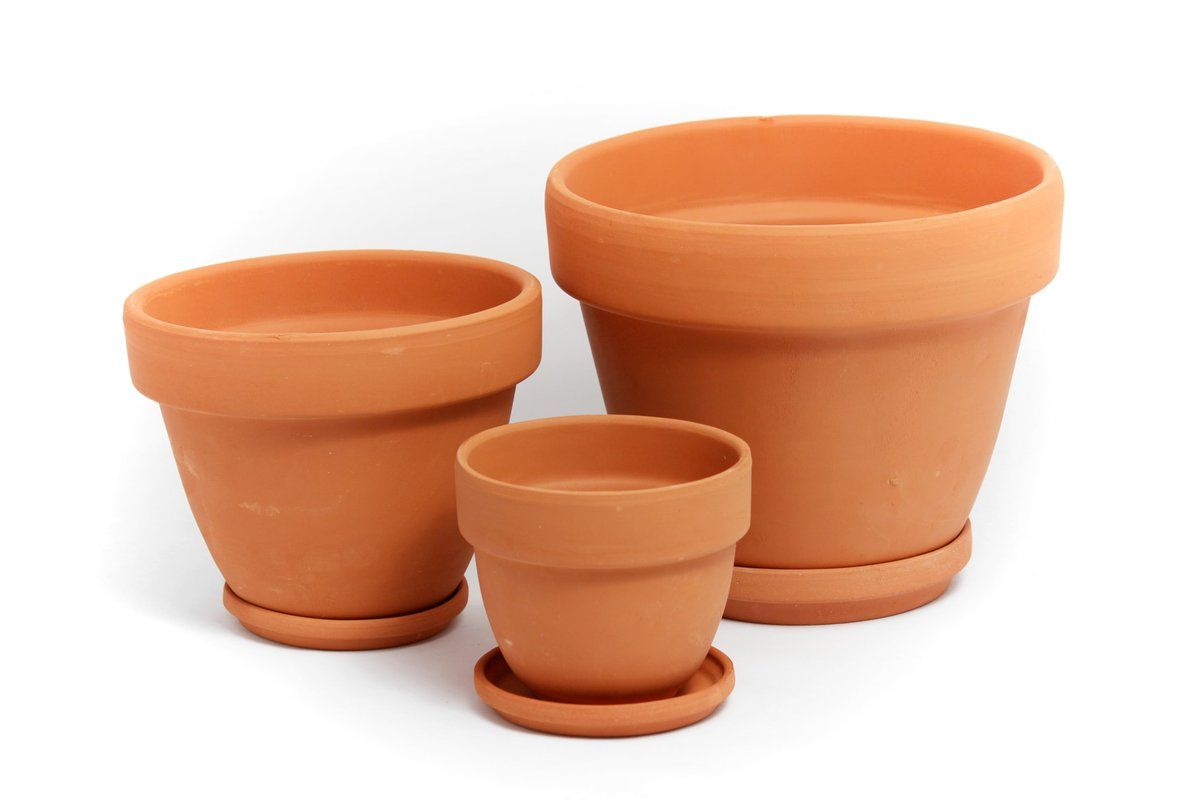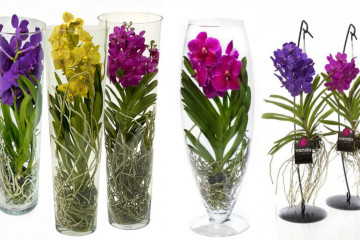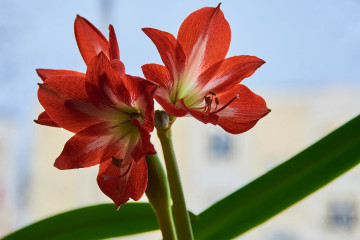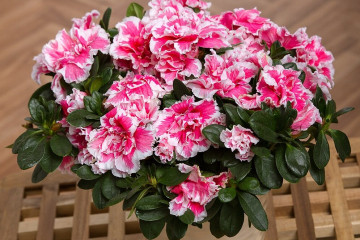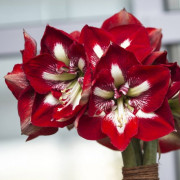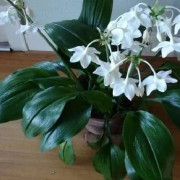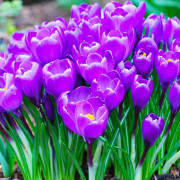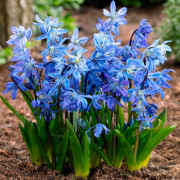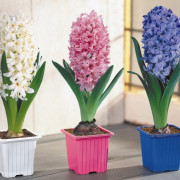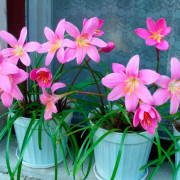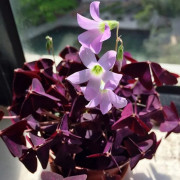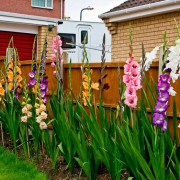Hippeastrum - home care before and after flowering
Content:
Hippeastrum is one of the most common indoor plants among perennial bulbous crops. The flower belongs to the Amaryllis family.
Hippeastrum - what is this flower
In old books on floriculture, you can find another name for hippeastrum - amaryllis. But in 1954 at the International Botanical Congress it was proved that these are different crops and their flowering occurs in different seasons of the year.
A short description of what it looks like
Hippeastrum is a flower that has a large bulb up to 11 cm in diameter and belt-like shiny leaves 70 cm in length. The culture produces a peduncle reaching a height of 65-70 cm, at the top of which there are large flowers up to 20 cm in diameter. They grow in several pieces - from 2 to 6.
Often there are flowers that have contrasting spots in the throat, stripes on the petals.
Useful properties of hippeastrum
Due to its bactericidal properties, the plant is often used to eliminate unpleasant symptoms associated with skin diseases. The correct algorithm of actions for the treatment of purulent wounds:
- The leaves of the hippeastrum must be cut off.
- Peel the sheet of film and grind the most fleshy part of it.
- Cover the wound with the mass and close it on top with a film, apply a bandage.
One sheet can be used several times to treat wounds. The part of the sheet that remains for future use should be stored in a glass of water.
This flower is often used in phytodesign of premises. Psychologists say that the beauty of culture has a direct effect on the human body, increasing its efficiency.
Main popular varieties
There are many varieties of this flower bred by breeders.
Hippeastrum Nymph
This hippeastrum can be white, with thin, randomly spaced pink stripes on terry petals. The plant reaches a height of 45 cm.The flower size is 22-25 cm.
Hippeastrum Sonatini
Hippeastrum Sonatini is a highly flowering, genetically short, specially bred flower variety. The diameter of an adult bulb is 4 cm.The culture reaches a height of 35-50 cm.
Hippeastrum Exotica
The large-flowered plant has a pleasant orange color with even petals. The size of each flower reaches 20 cm.The maximum height of the hippeastrum is 40 cm.
Hippeastrum Adele
This large-flowered crop is a distant original cultivar. Each flower is evenly tinted in pink and reaches a diameter of 20 cm. The arrow is 60 cm high and contains 4 wide-open flowers.
Hippeastrum Alfresco
The flowers of this culture are heavy, since each of them contains several petals inside. They are creamy with a yellow-green core. The diameter of the flower reaches 15 cm. The leaves develop after the flowering process.
How to care for a hippeastrum flower at home to bloom
Cultivation of a culture implies the implementation of basic rules that contribute to the development, flowering and reproduction of a flower.
How to make it bloom, how often it blooms
Florists point out a few basic rules for getting the Hippeastrum to bloom:
- The bulb should be treated with hot water at a temperature of 43-45 degrees for 3 hours. For most of the hippeastrum, such care promotes flowering 20-25 days after the procedures.
- It is recommended to stop watering the indoor flower in August and place it in a dark, dry storage area.
- Watering the culture should begin at the end of January and then, after 30-35 days, it will begin to bloom.
- All leaves of the plant must be cut in July and irrigation stopped for 1 month. At the first watering after such an exposure, the flower needs to be fed with a complex fertilizer. In this case, the first peduncle can be expected in August-September.
Many novice gardeners are wondering about hippeastrum: how to care for it to bloom. To do this, do not separate the children during the period of growth and preparation of the bulb for distillation. Early forcing in the middle of winter needs hibernation for up to 2 months, late forcing up to 4 months. Flower arrows are cut at a distance of 2-3 cm from the bulb with unopened, but already painted buds.
Illumination and temperature conditions
The bulbous flower grows well in direct sunlight. A developing peduncle needs a daytime temperature regime of + 20 ... + 22 degrees, at night - at least 18. Hippeastrum flowers can be harmed by temperatures below +5 degrees. The dormant bulb can withstand only short-term reductions in the thermal regime down to -1 degrees.
In order for an indoor flower to fully develop, there should not be frequent temperature changes at home.
Watering rules and humidity
The crop should be watered when the soil is slightly dry. In the process, it is recommended to avoid getting liquid on the bulb, part of which is above the soil level.
Post-flowering care rules
At the moment when the flower should already bloom, before the onset of dormancy, you also need to monitor the lighting, watering frequency, top dressing and temperature regime.
Vegetation of the hippeastrum after flowering
To grow a healthy hippeastrum, you need careful home care. After all, this flower is a forcing flower, which makes it possible to get peduncles in a manageable time.
The roots and leaves of the hippeastrum grow intensively in early spring in parallel with the wilting of old leaves and in late June and early July.
Dormant period
At the last stage of the growing season, you need to water the plant less often every week, then watering should be stopped altogether.Dead leaves must be removed.
Plant transplant
The hippeastrum flower grows healthy and beautiful, the transplant of which is carried out taking into account the following features:
- a flower pot must be chosen heavy, with a diameter of at least 20 cm;
- the flower must be planted in a slightly larger container than it grew before;
- it is allowed to plant the bulbs in a long container, keeping the distance between them from 10 cm;
- it is unacceptable to plant a plant in a light pot, since it can turn over due to the overall flowers and leaves;
- you should use drained soil with humus, leaf and humus soil, and sand;
- before transplanting a culture, you need to free the bulb from dried scales;
- the bulb must be peeled before the appearance of white or green tissues involved in the production of chlorophyll;
- before planting, it is recommended to treat the bulb with a weak solution of potassium permanganate, then dry it well;
- 1/3 of the bulb must be left above the surface when planting;
- the transplanted flower needs abundant watering with water at room temperature and sunlight;
- you can remove dried and diseased roots without cutting the root system;
- if there are cuts on the bulb, they should be treated with chopped charcoal;
- the transplantation process is recommended to be carried out one month after flowering.
How to understand that a flower is depleted, restoration
In order to identify certain diseases in time, you need to carefully monitor the state of the flower.
| Flower depletion symptoms | Recovery |
| Dried and yellowed leaves. | Dry air, excessively high room temperature should be eliminated. It is also recommended to increase watering frequency. |
| Rot formation. | In this case, watering must be reduced and reduced to a pallet. The bulb must be transplanted into new soil. |
| Lack of peduncle. | It is necessary to ensure peace in the autumn-winter period; before planting, the bulb should be held in hot water. |
| The culture doesn't grow. | It is recommended to increase the nutrient feed and ensure that more light is shining on the plant. |
| Flowers bloom, but small. | To eliminate the problem, it is necessary to carry out constant fertilization of the bulb, properly observe the dormancy regime, and keep the flower in a sunny place. |
Reproduction of hippeastrum from seeds and children
Seed propagation is not an easy process. They appear 2 months after flowering and hand pollination. Finished black seeds are formed in the seed box. For Hippeastrum, home care with this type of reproduction should be carried out in the following order:
- The collected seeds should be planted in the spring in a sandy-leafy substrate.
- The first shoots appear 15 days after planting. Almost all of them sprout fresh seeds;
- When the greens reach 10 cm, the sprouts must be transplanted into separate small pots. From this point on, the bulb begins to form.
Hippeastrum can multiply as a bulb in different ways:
- By separating three-year-old daughter bulbs from each other. In this case, you need to make cuts and process them with charcoal. Then they should be planted in pots. Young crops for 2 years are prohibited from cutting and leaving to rest. In the third year, hippeastrum often gives a peduncle.
- It is allowed to divide the bulb into several parts with scales and a bottom. After 50 days, children of the hippeastrum appear, planting which must be carried out in small containers.
Diseases and pests
It is worth considering in more detail the question of how to care for hippeastrum correctly in order to bypass some diseases and the appearance of pests.
| Name of disease or pests | Measures to eliminate unpleasant manifestations |
| Red mushroom burn | Removal of damaged parts is required, treatment of these areas with a solution of copper sulfate. |
| The bulb began to rot | After removing the damaged areas, these parts should be treated with a foundation. |
| The appearance of powdery mildew | It is necessary to cut off the diseased parts of the plant and apply for their treatment "Tomaz" or "Fundazol". |
| Scale, aphid, tick, thrips | In the fight against insects, treating the culture with fungicides will help. |
Hippeastrum red with white spots or in other shades fits perfectly into the interior. It is important to put a beautiful culture out of the reach of children and pets, since the juice of all parts of the plant is poisonous.



